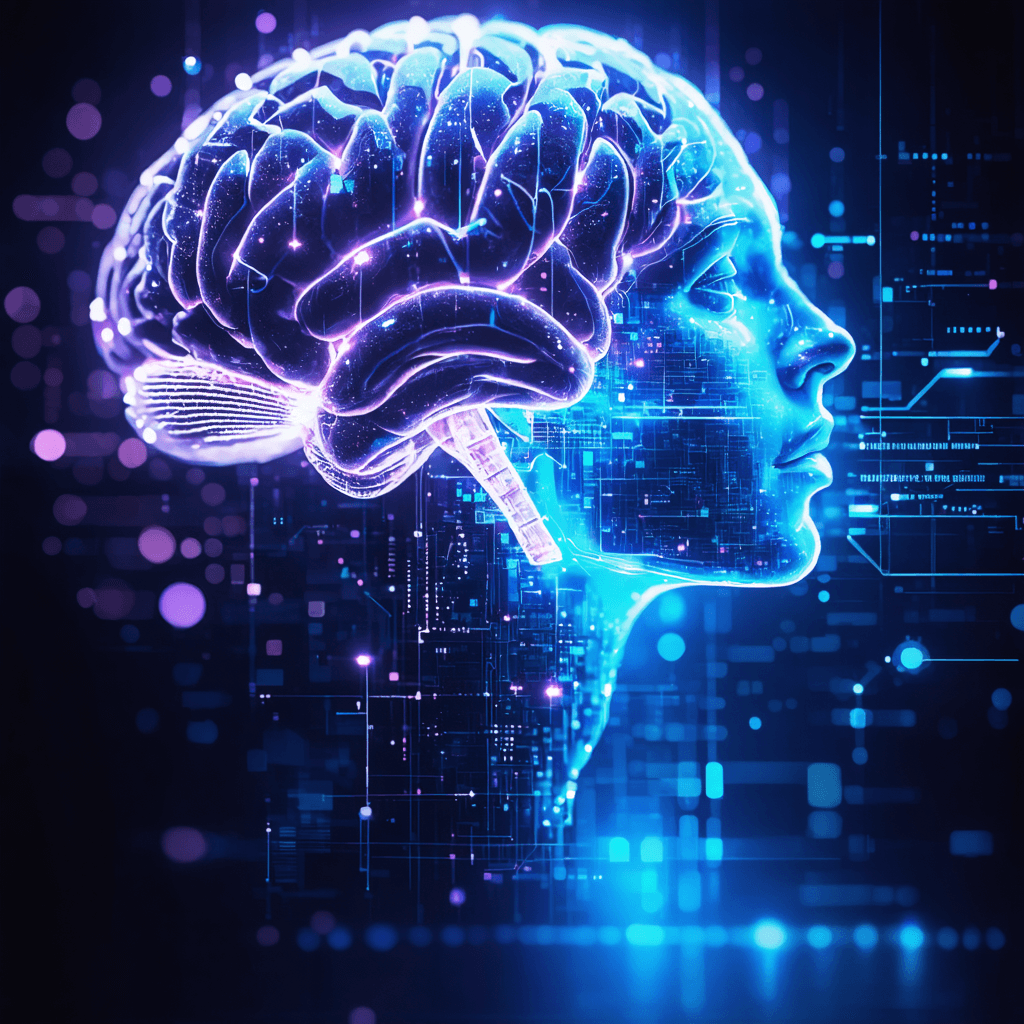Machines à lire les pensées : Comment vos ondes cérébrales révolutionnent l’interaction homme-machine
La fusion de la conscience humaine et de la technologie informatique a fait un bond en avant quantique en 2025, alors que des systèmes révolutionnaires d'interprétation des ondes cérébrales transforment la façon dont nous interagissons avec les machines. Ce développement révolutionnaire ne fait pas que changer des vies, il redéfinit ce que signifie être humain à l'ère numérique.
L'aube de la technologie de la pensée au texte
Des percées récentes dans le décodage neuronal ont permis de traduire les ondes cérébrales en texte avec une précision sans précédent. Des chercheurs australiens ont développé un modèle d'IA capable d'identifier les pensées à partir des ondes cérébrales, nous rapprochant ainsi d'une communication cerveau-ordinateur transparente. Cette technologie représente un changement de paradigme dans la façon dont nous interagissons avec les appareils numériques, passant des interfaces physiques aux connexions neuronales directes.
L'impact révolutionnaire de Neuralink

Le paysage des interfaces cerveau-ordinateur (ICO) a été radicalement modifié lorsque Neuralink a réalisé sa première implantation humaine réussie. Noland Arbaugh, le premier patient de Neuralink, a démontré le potentiel de la technologie en contrôlant un curseur d'ordinateur en utilisant uniquement ses pensées. Cette étape importante a ouvert de nouvelles possibilités pour les personnes à mobilité réduite et a mis en évidence les applications pratiques des interfaces neuronales directes.
Applications et impact dans le monde réel
Révolution médicale
- Restauration du mouvement pour les personnes paralysées
- Solutions de communication pour les patients atteints du syndrome d'enfermement
- Techniques de réadaptation améliorées pour les survivants d'AVC
- Surveillance et intervention en matière de santé mentale
Amélioration de l'éducation
- Apprentissage accéléré grâce à un retour neuronal direct
- Amélioration de la surveillance de la concentration et de l'attention
- Optimisation du rythme d'apprentissage personnalisé
- Évaluation de la compréhension en temps réel
Intégration professionnelle
- Contrôle mains libres de systèmes complexes
- Capacités multitâches améliorées
- Collaboration homme-IA améliorée
- Gestion des flux de travail rationalisée
Cadre technologique actuel
Le système ICO moderne se compose généralement de trois composants principaux :
- Acquisition du signal : des capteurs EEG avancés et des implants neuronaux capturent les schémas d'activité cérébrale
- Traitement du signal : des algorithmes basés sur l'IA interprètent et classent les signaux neuronaux
- Génération de sortie : les signaux convertis déclenchent des actions spécifiques dans les appareils connectés
Considérations relatives à la confidentialité et à l'éthique
Alors que nous nous aventurons plus profondément dans cette technologie, des questions importantes se posent concernant :
- Sécurité des données et protection des informations neuronales
- Consentement et limites de la vie privée
- Potentiel d'inégalité en matière d'amélioration cognitive
- Implications éthiques de la surveillance de la pensée
Perspectives et développement futurs

La trajectoire de la technologie de lecture des pensées pointe vers des applications encore plus sophistiquées :
- Intégration transparente avec les systèmes de maison intelligente
- Reconnaissance et réponse émotionnelles améliorées
- Communication directe de cerveau à cerveau
- Systèmes de contrôle de prothèses avancés
Défis de mise en œuvre
Malgré des progrès significatifs, plusieurs défis demeurent :
- Précision du signal et fiabilité de l'interprétation
- Stabilité à long terme de l'implant
- Obstacles liés au coût et à l'accessibilité
- Exigences en matière d'infrastructure technique
La route à suivre
L'intégration de la technologie de lecture des pensées dans la vie quotidienne représente un changement fondamental dans l'interaction homme-machine. À mesure que ces systèmes deviendront plus raffinés et accessibles, nous pouvons nous attendre à des changements transformateurs dans de multiples secteurs, des soins de santé à l'éducation et au-delà.
Mesures pratiques pour l'engagement
Pour ceux qui s'intéressent à cette technologie révolutionnaire :
- Restez informé des derniers développements
- Participez à des programmes de recherche sur les ICO
- Explorez les ressources éducatives
- Envisagez des applications potentielles dans votre domaine
Prêt à plonger plus profondément dans le monde de la technologie de pointe ? Explorez nos cours et ressources complets chez 01TEK. Des programmes d'introduction à la formation technique avancée, nous offrons les connaissances et les compétences dont vous avez besoin pour faire partie de cette révolution technologique. Visitez notre site Web dès aujourd'hui pour en savoir plus sur nos programmes spécialisés dans la technologie des interfaces neuronales et l'intégration de l'IA.
Sources : 1. ABC News - Développement des ondes cérébrales par l'IA de l'équipe de Sydney 2. BBC News - Premier patient de Neuralink 3. Medical Futurist - Les ICO dans les soins de santé 4. Quantum Zeitgeist - Machines à lire dans les pensées 5. Capitol Technology University - La puce cérébrale de Neuralink
The only place where success comes before work is in the dictionary.
Vidal Sassoon



